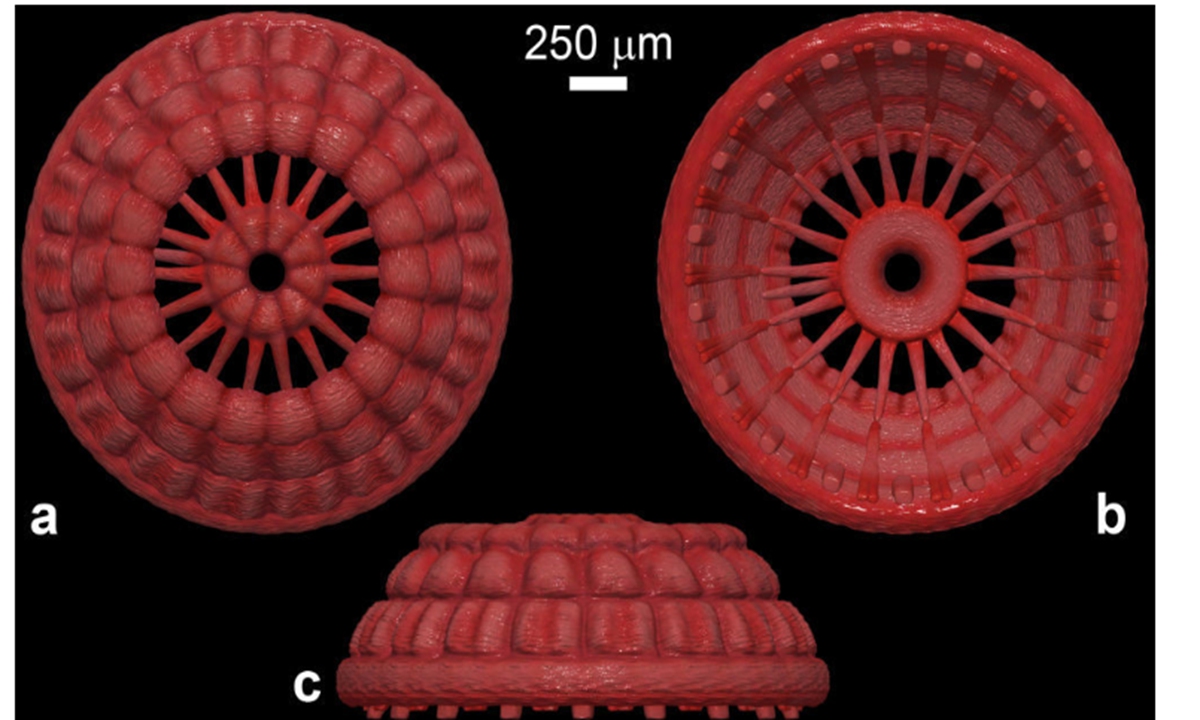
A restoration photo of the 500 million-year-old fossilized animal muscle Photo: Screenshot from online
Fossilized animal musculature dating back 500 million years has been discovered in Northwest China's Shaanxi Province, according to a report released by the Nanjing Institute of Geology and Palaeontology, Chinese Academy of Sciences (NIGPAS).
The Cambrian microfossils, which were identified as 535 million years old, were discovered by an international research team with NIGPAS, giving fresh insight into early Cambrian cycloneuralians, which were closely related to arthropods, the most successful animals on Earth, according to the report published on Wednesday.
The microfossils preserved the introvert musculature of cycloneuralians, a group of animals that include roundworms, horsehair worms, mud dragons, and many other creatures.
Zhang Huaqiao, a researcher with the international team, said that the musculature looked like five rings of increasing diameter from top to bottom. The largest ring is three millimeters in diameter. The team concluded from the evidence that the musculature was probably located on the animal's "mouth."
The radial and longitudinally arranged structure can drive the overall contraction and relaxation of the muscles, and the top ring can even be "pulled" into the remaining four rings. Ancient annular animals relied on these actions to eat and assist in movement, according to the team.
"The early fossilized animal muscle provides an important basis for our understanding of the evolution of locomotion. Based on it, we can learn how ancient animals moved and how they developed their current athletic abilities step by step," said Zhang.
Researchers from the Virginia Polytechnic Institute and State University, Lund University, the First Institute of Oceanography and Ministry of Natural Resources were also involved in the study.
The research study was published in the Proceedings of the Royal Society B: Biological Sciences on Wednesday.
Global Times
URL: https://www.seeglobalnews.com/read-2453.html